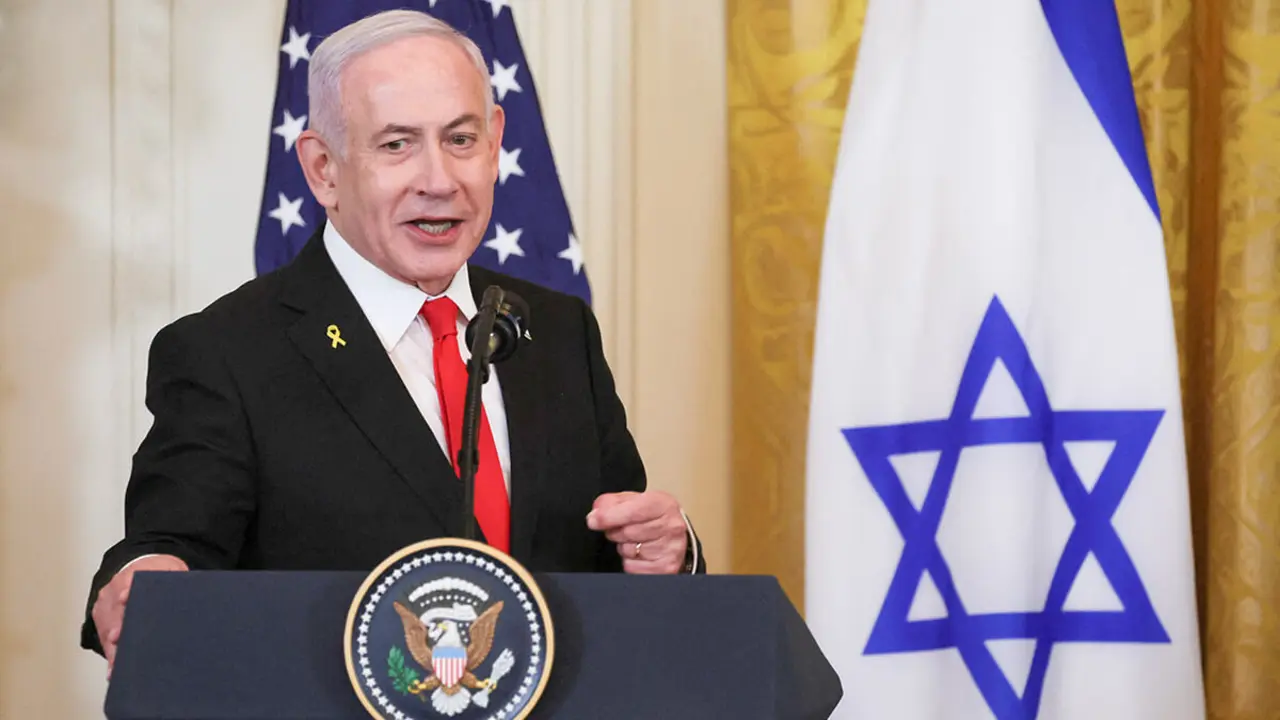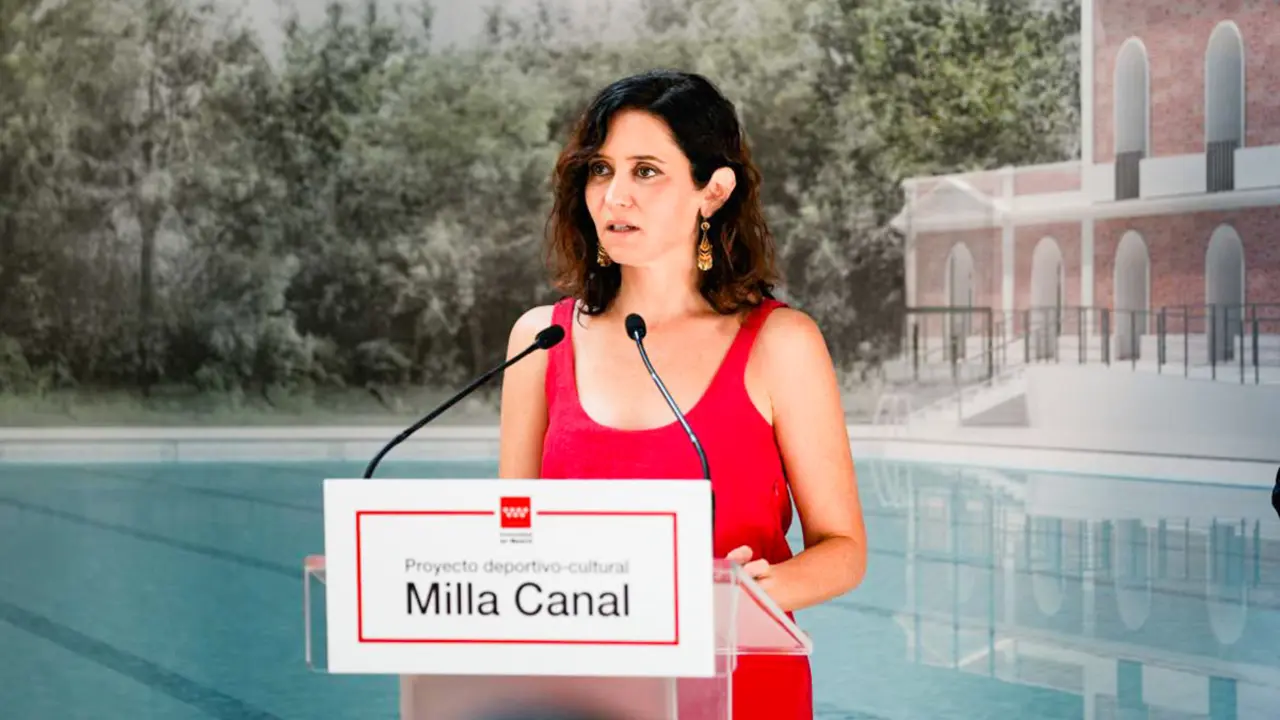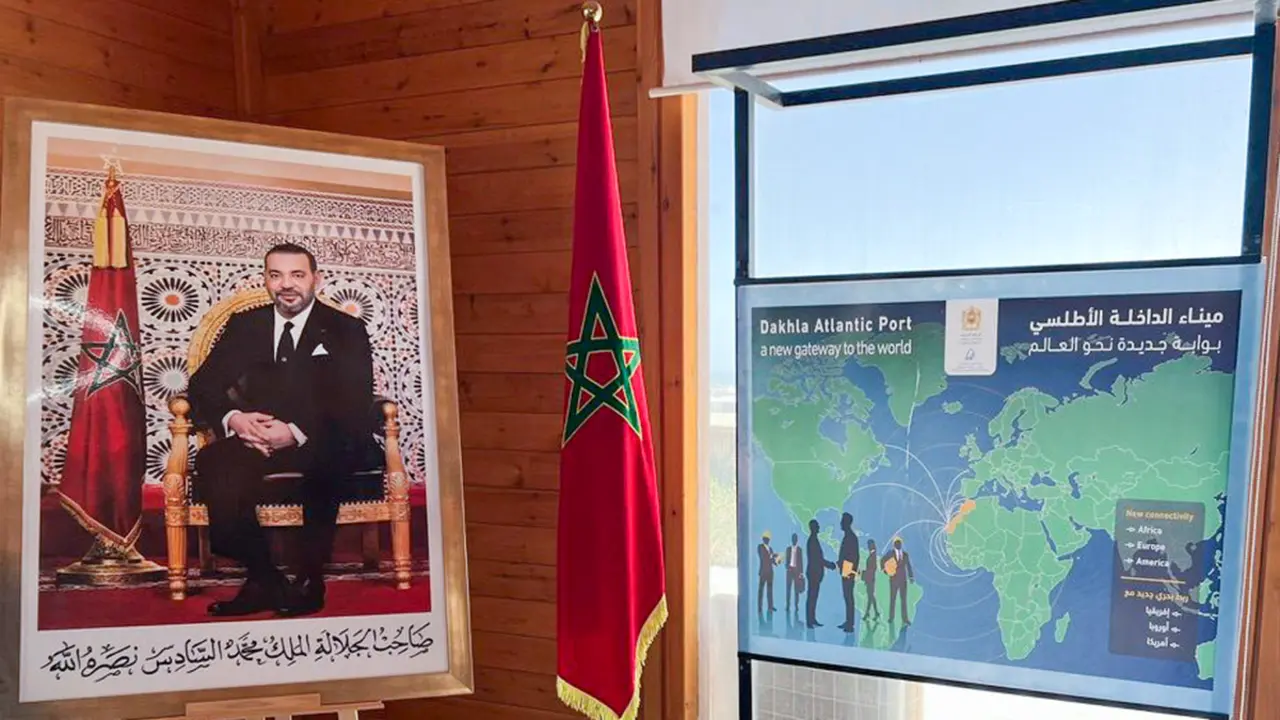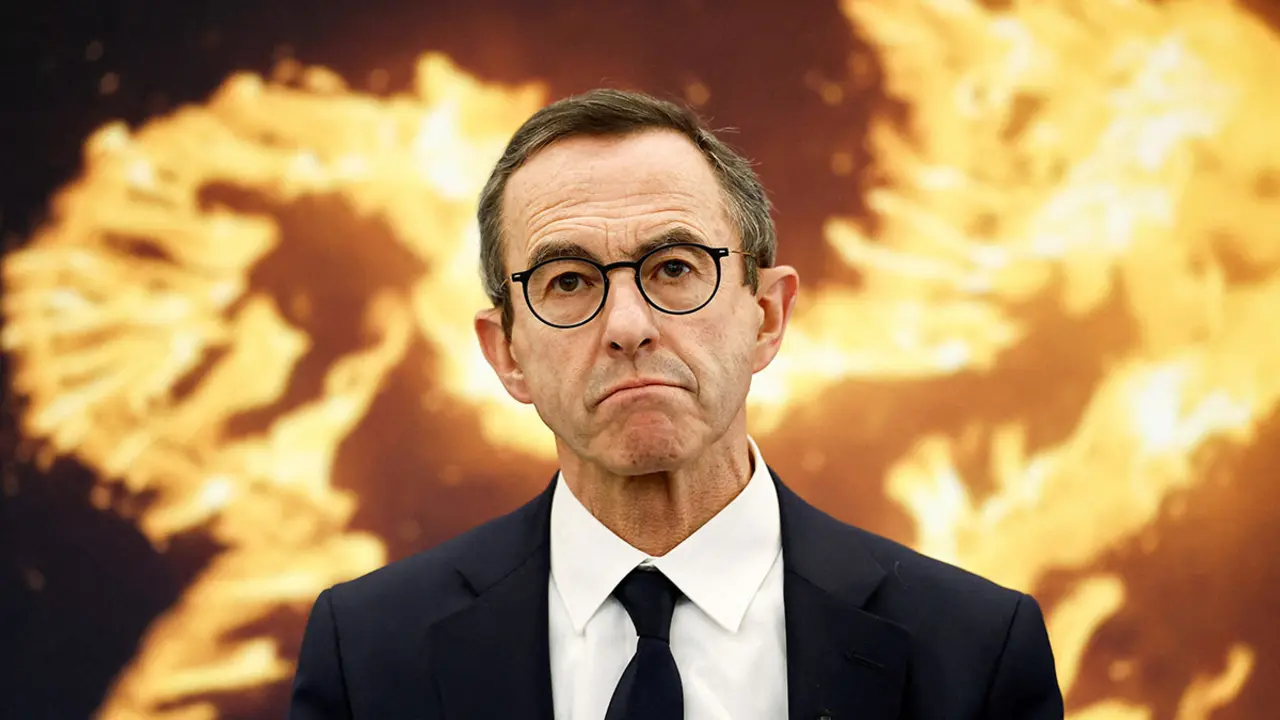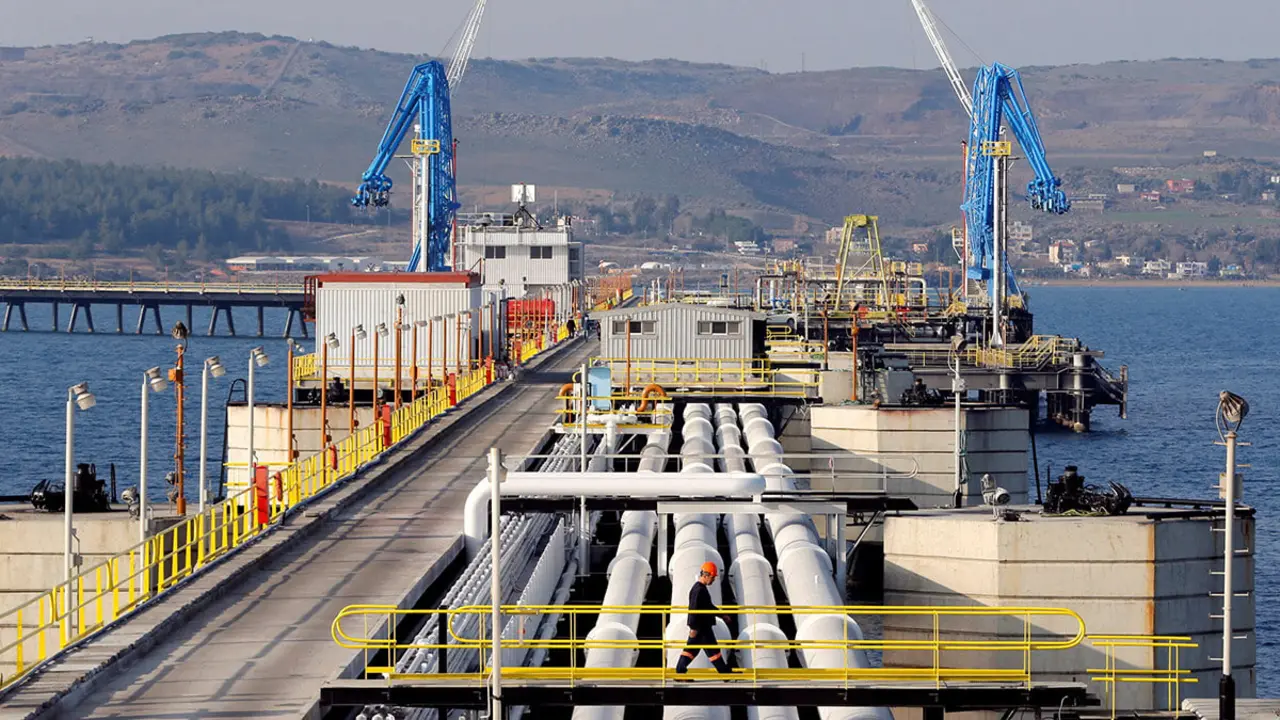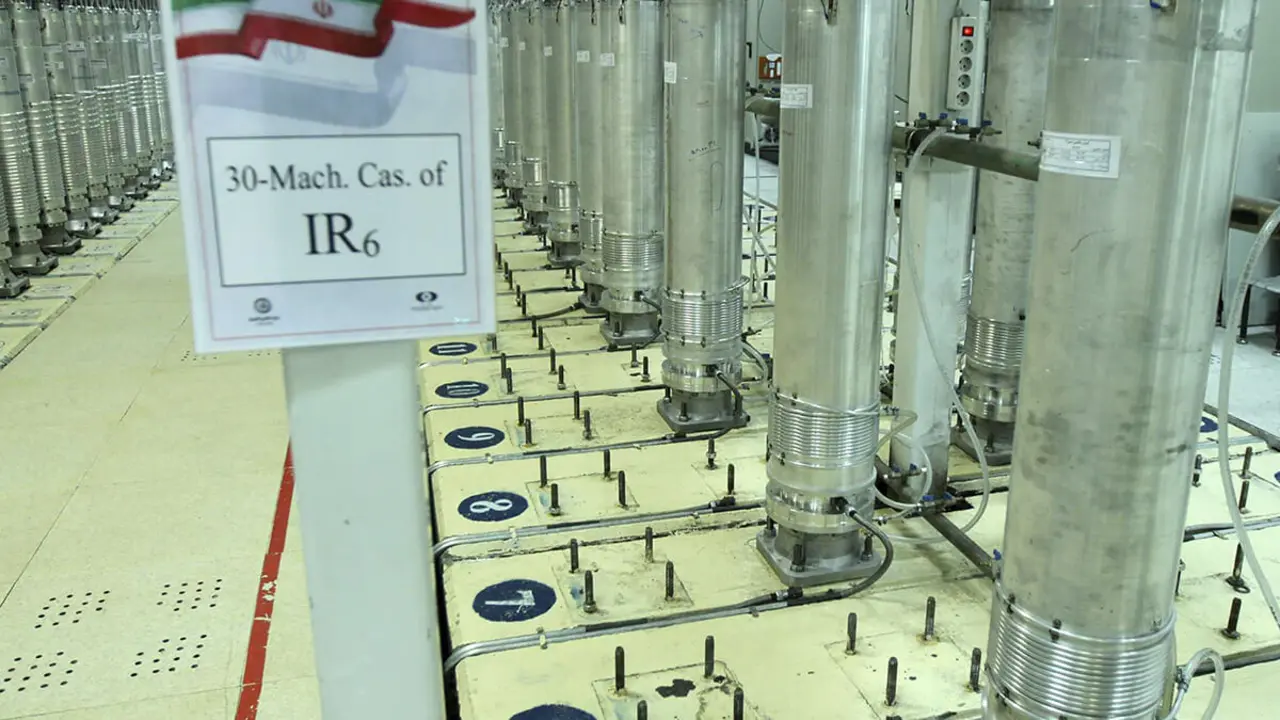Tense calm in Ukraine after protests against Zelensky, while drone presence increases on the front lines
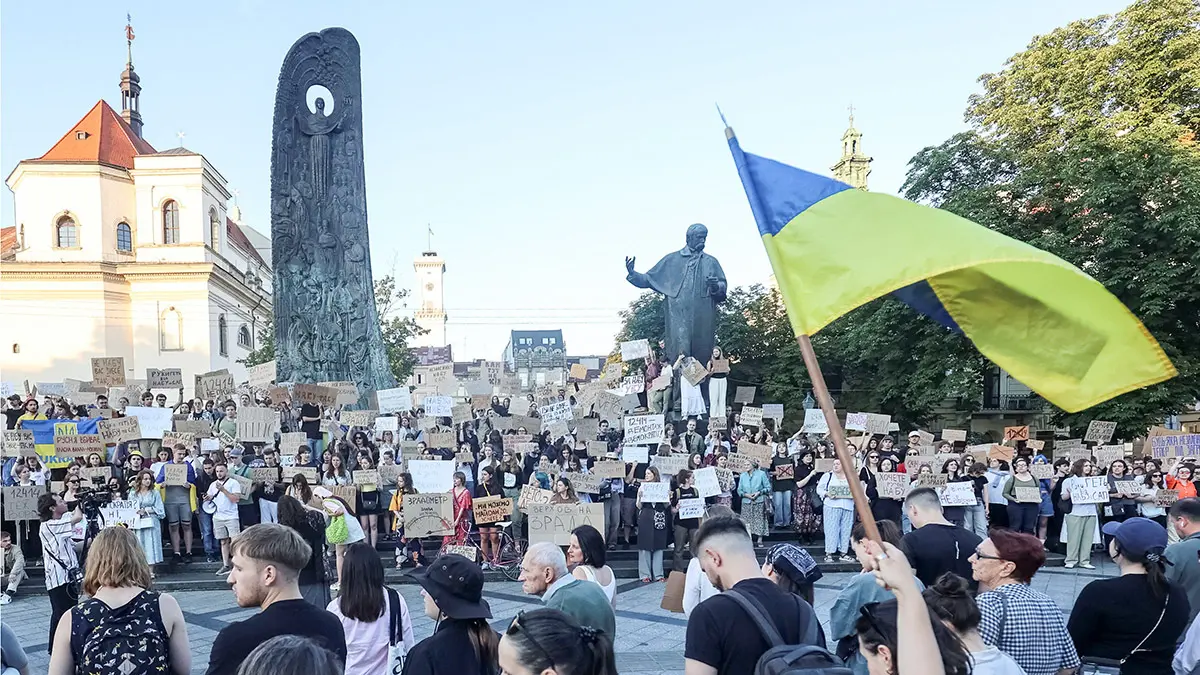
Correspondent and journalist María Senovilla, a contributor to Atalayar, analysed the demonstrations and protests that have arisen over draft law 12414 on Onda Madrid's programme ‘De cara al mundo’. She also considered whether detailed information is being provided about FPV drones to countries collaborating with Ukraine.
María, President Zelensky has promised changes to the decree that sought to control the institutions responsible for fighting corruption, but only after the protests that took place in many Ukrainian cities.
Yes, the uproar this week has been incredible. While the war continued, with no let-up on the battlefronts, almost all cities saw demonstrations that were the largest since the war began and were reminiscent of the rallies that took place during the Maidan protests, which, unlike those taking place today, were led by very young people. There were many women, including war veterans. The men, who are of conscription age, have mostly stayed at home, presumably out of fear, but even so, young people have filled the streets of Ukraine to protest against Bill 12414, which strips the two main agencies in Ukraine of their independence. These are the National Anti-Corruption Bureau, known by its acronym NABU, and the Independent Prosecutor's Office, specialising in corruption, known by its acronym SAPO. The bill passed by President Zelensky places these institutions under the umbrella of the Ukrainian Prosecutor General's Office, which is linked to the political establishment.
This does not mean that these agencies will be closed, but they will no longer be able to work independently, which strips them of part of their raison d'être. The Ukrainian president has justified this decision by claiming that Russian agents had infiltrated these institutions and that they had evidence that all the information handled by these agencies was being leaked to the Kremlin, which would be a security breach of a very worrying magnitude. However, placing both institutions under political control does not seem to be the best solution either, and this has been understood by the Ukrainian people, who have taken to the streets.
Faced with massive protests, especially in the streets of Kiev and Lviv, but also in Odessa, Dnipro, Kharkiv and many other cities, the Ukrainian president has had to back down, but only partially. Zelensky has assured that the demonstrations have not fallen on deaf ears and has promised a new bill on the independence of anti-corruption agencies, but for the moment he has not repealed Law 12414, which is what the demonstrators are demanding. It seems that people are not willing to go home until this new bill becomes a reality and until the independence of both anti-corruption institutions is guaranteed once again.
I mentioned at the beginning that I was surprised by the number of young people taking part in these protests, and I don't want to close the subject without briefly mentioning that it is precisely young people who are least tolerant of corruption, which, unfortunately, is very prevalent in Ukraine. Ukrainians say that this corruption is a legacy of the Soviet Union, and I want to explain what kind of corruption we are talking about, because it is not limited to the political or business spheres, as we have cases in our country or in neighbouring countries. Corruption in Ukraine is present in Ukrainian practices and cuts across society.
I am referring to gestures such as putting a banknote in a politician's coat pocket to get an operation brought forward, paying at a driving school to get your driving licence, or now, when we are in the middle of a war and there are so many soldiers on the front line, there is also the fact of paying, and they pay thousands of dollars to obtain papers that will allow them to be discharged and go home if they are given them, or even to avoid going to the front line when they are recruited. Younger people can no longer tolerate this, and they have exploded with the approval of this bill 12414, which was also signed on Wednesday by Zelensky with virtually no explanation. It was born after and they are not willing to let the only two institutions that existed, which were fighting corruption timidly, as they had not achieved much since they were set up, be stripped of these tools.

Young people protesting against this initiative, we have also read that in Brussels, the President of the Commission, Ursula von der Leyen, has warned Zelensky, drawing his attention to what is happening. Meanwhile, Maria, in Istanbul, Russians and Ukrainians have again agreed to exchange prisoners. It's something, isn't it?
In fact, it is the agreement that was already reached in the first round of negotiations held in Istanbul in May, which began with the 1,000-for-1,000 exchange that we reported on.
In Wednesday's negotiations, a new exchange of 1,200 prisoners on each side was agreed, which would be the ninth handover of prisoners since that first round of negotiations in May, because there are thousands and thousands of prisoners of war on both sides, both in Ukraine and in Russia. It should also be noted that Moscow proposed brief truces on the front line, not across the entire front at once, but in parts of the front line, in order to collect the dead and wounded and also exchange bodies, which unfortunately also number in the thousands.
What I asked Kiev and has not been heard is a meeting between Presidents Vladimir Putin and Volodymyr Zelensky before the end of the summer, but Russia has argued that for this to happen, for both presidents to be able to sit down at the table, Ukraine would first have to cede the occupied territories, renounce its accession to NATO and also renounce rearmament, in other words, to renounce having an army that can protect Ukraine from invasions such as the one currently being carried out by Russia, something that the Ukrainian government cannot accept, and so it seems that this meeting between Putin and Zelensky will not take place before the end of the summer.
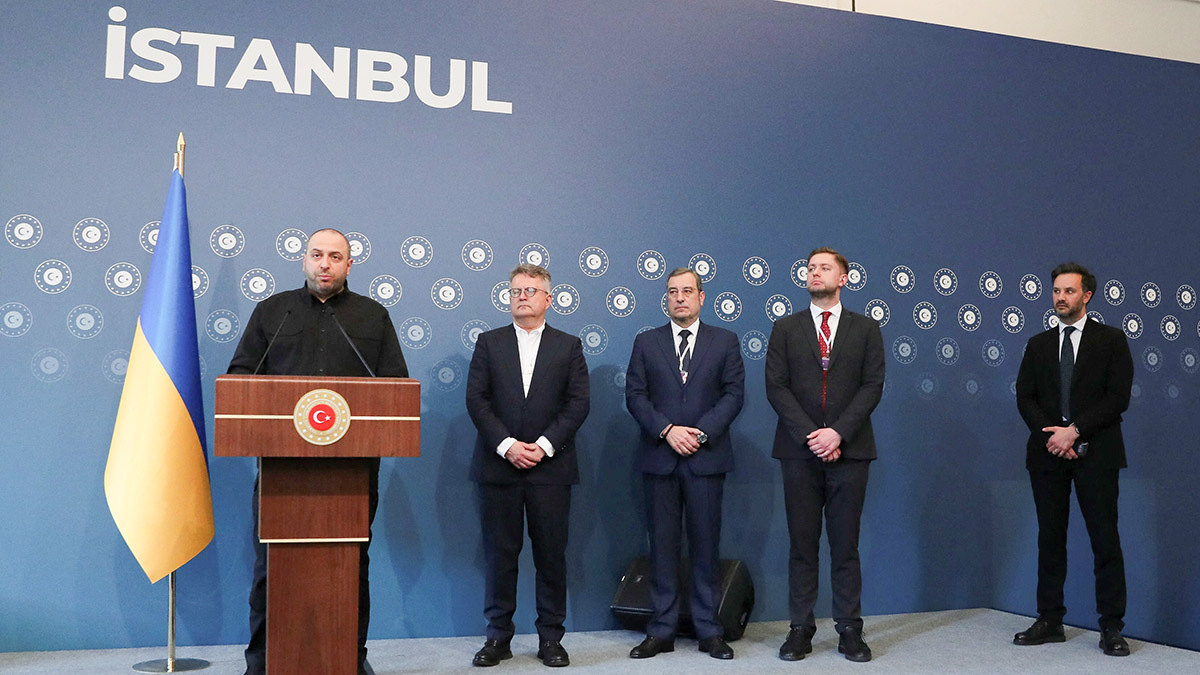
And Russia continues with its bombing, there has been very intense bombing in the last few hours against Odessa, but we have been commenting on this for weeks, promising, María, to explain in more detail why almost every week we talk about drones, these devices that have changed the way war is waged. This week you have also been living in a combat zone where FPV drones are used, tell us about it.
Those famous FPV drones that are currently dominating the front line, and not only the front line, but also, unfortunately, the cities behind the lines.
FPV drones, those first-person view drones, which we have seen so many times in images of the pilots who operate them with realistic goggles, seeing as if they were in a video game, where the drone armed with explosives is going and launching them at targets. This week, I had the opportunity to join one of these FPV drone combat positions, live with them and see the work they do. I was able to confirm that these unmanned aerial vehicles have completely changed the front line in the war in Ukraine right now.
The platoon commander and the position commander confirmed that drones are probably the weapon that has evolved the fastest since they began to be used in this war. They started out as a simple reconnaissance tool for flying over the area and locating targets, which would then be attacked by artillery. They went from that to becoming, the same drone, an attack weapon that is fitted with an explosive and launched directly in a kamikaze manner against the target.
These other large drones can carry gliding bombs and also launch them. And they have also changed tactics, the way armies fight and engage in the centre of combat. Drones are no longer a support, an aid to artillery, but have become primary weapons that support the infantry and, for months now, have also been taking on logistical tasks. In other words, it is no longer necessary to send people with supplies, water, food, medicine and ammunition to the front line trenches. These supplies can be transported by drones, thus avoiding putting the lives of people who would have to leave the trenches to collect these supplies or reach the trenches to deliver them at risk. So, there are many drones currently forming part of military strategies.
It is not just these attack drones, it is not just the large aerial drones used for logistics and attack missions. Ground drones also play an important role.
Missions such as evacuating the wounded, for example. Right now, frontline evacuations are increasingly being carried out by ground drones that are radio-controlled so that they do not risk the lives of the rescue team by going into that hell, into that front line of combat to pick up the wounded. And the most curious thing is that they have not been automated, but all these missions, all these roles that were previously performed by soldiers, have now been placed in the hands of drones precisely because the huge number of drones that Russia currently has on the front lines in Ukraine are veritable swarms. They do not allow people to do their jobs.
The most complicated thing about working in the trenches right now is not what happens inside the trenches. It's getting to the trench and getting out of the trench. The roads are now a real trap. The Ukrainians have put up fishing nets on the stretches of road where they can, with poles to try to stop the kamikaze attacks by these drones that the Russians are constantly crashing into vehicles, not only military but also civilian.
The operational range of these Russian FPV drones has also reached cities in the rear, where there is no front line, and we have been reporting here for months that this was already happening in the city of Kherson, where the Russians were conducting manhunts with these FPV drones, which they used to spot civilians and launch explosives at them. This practice is now spreading to the cities of Donbas, Kostiantynivka, Sloviansk, and now also Dobropilia. These are cities where civilians have been warned that it is extremely dangerous to go out on the streets because at any moment a drone carrying explosives could fall on them. It could fall on them, or the Russians could launch a drone carrying explosives directly at them.
This is a clear war crime that we have been saying for months that no one was speaking out about, that neither the UN nor the Red Cross nor any other major international institution was denouncing. And well, Russia has seen that no one was saying anything and what it is doing is extending the technique to more cities.

Allow me, María, to bring in Lucas Martín, expert, international analyst and contributor to Atalayar magazine. Listening to María, an army, for example, now that security and defence in Europe are being considered, the European army, etc., or each country, for example, Spain, or you have a factory or an industry producing all kinds of drones, as María has explained, or, if not, right now, drones and anti-drones. How do you analyse this situation that we have already discussed on other occasions, which, as María explains, has changed many of the parameters that were previously used in wars?
The first thing I want to do is to acknowledge and highlight, as has been done many times before, the work that María has done, because it is impressive and being there is worthy of admiration. In this war, one of the main things it will leave us with is a total change in employment, namely unmanned aerial, land and even maritime vehicles.
And, as María has rightly said, what began as a use mainly for what is called ISR, intelligence, reconnaissance and surveillance, has led to a use in direct actions and, obviously, all European and Western armies are already working to adapt and learn lessons from how the Ukrainians are using them, and the Russians, who have also learned. And one of the lessons that has been learned is that you need to have a range of drones, or UAVs, as they are called, not just the large ones we have seen again, such as the famous Bayraktar TB2, but small, highly versatile devices that allow you to strike very quickly and on a massive scale at a very low cost. And, as you mentioned, the big problem here, more than the development of drones or UAVs, is everything related to defence against UAVs, because, obviously, we have to find a way to protect ourselves against these devices, and today that is very difficult.

Economically speaking, María, a drone can cost anywhere from 600 to 1,000 or 2,000 euros, depending on what you want, while a system to defend against drones costs much more.
An FPV can cost from 400 dollars. If the FPV now has guided fibre optics, precisely so that it is not affected by electronic warfare countermeasures, the price can double, so we're talking about 1,000 to 2,000 dollars, as you said, and if we're talking about a large drone, for example, a vampire type that has the capacity to launch those gliding bombs, we're talking about a 15,000-dollar drone.
Compared to the cost of artillery shells, it's a joke. Where I've been, they told me that in 24 hours they make an average of 25 to 30 flights with these FPV drones, and that's a tenth of what it costs an artillery position to operate for 24 hours, in terms of the cost of artillery shells. So, yes, price is one of the issues that has led to the proliferation and rapid development of drones, because the final war is very expensive.
Furthermore, the problem with these drones that María mentioned is that you can't detect them with radar; they're too small, so there's currently no technology that allows you to know if a drone is coming at you and give you at least a direction from which it's coming. You can know that you have a device flying, working on a certain frequency band above you, but that's it. And if you replace that with a fibre-optic-guided drone, that possibility of detection through frequencies is eliminated. Therefore, you can't shoot it down using electronic warfare either. I think it's a very serious problem.
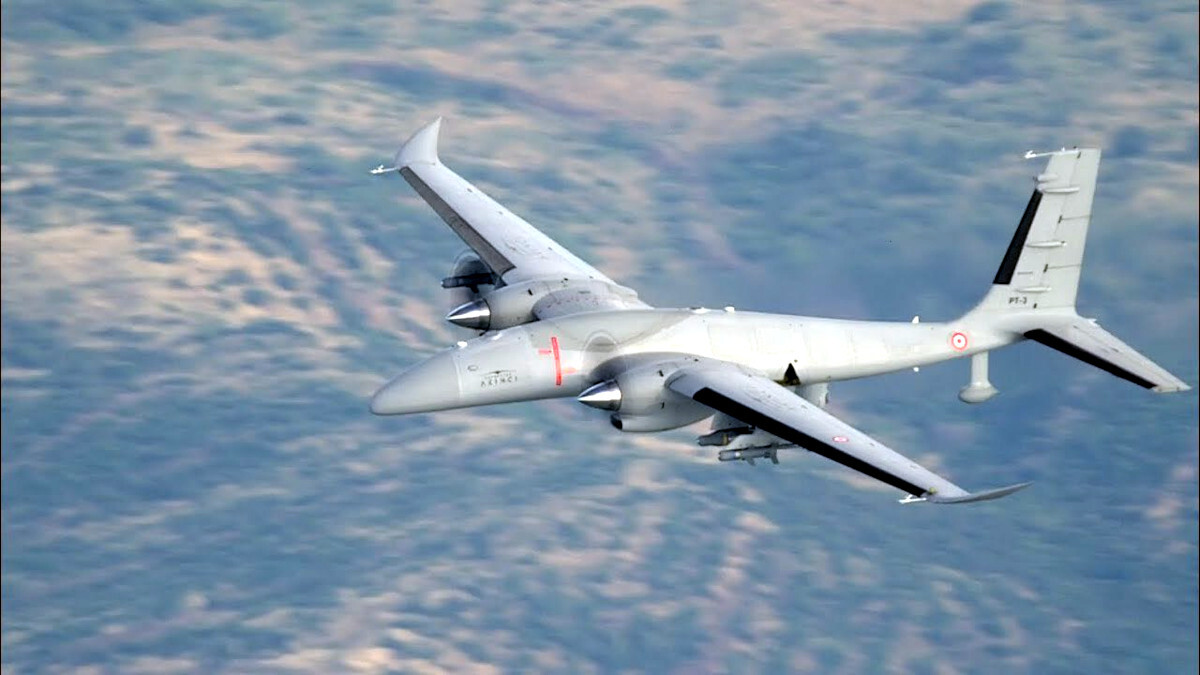
Pedro González, journalist, founder of the 24 Horas channel and Euronews, also a contributor to Atalayar magazine. Pedro, back in the day, people used to say that digitalisation and new technologies were going to create new jobs, and the example of drone pilot was always used. Right now, drones, within the framework we are discussing with María and Lucas, within the approach of NATO countries or the plans of the corresponding armies, should Spain also take the initiative in this regard and adapt to what is currently being planned for a possible conflict where drones are fundamental?
What I think is that, following your line of argument, it is true that, in the example you just gave, drone pilot, there are many jobs, as you were saying, that are emerging or already emerging from all this research. It is not just about the pilot who flies the aircraft for military action, but also about Lucas and María, as you pointed out, who are involved in countering these types of weapons and threats.
So a series of new jobs or adaptations are emerging, and naturally that can be multiplied by what remains. Lucas said at the beginning of his speech that, of course, the rules of war or the way war is fought are changing radically from the one currently being fought in Ukraine. I totally agree with that and, to some extent, with the feeling that there is, if we compare it perhaps with wars that are not so distant, such as the one in the Balkans, etc., because it is almost the same distance between those and when we saw them recreated in films with spears and other types of weapons.
In other words, there has been such a significant evolution that I believe it is essential that the research aspect, as is always the case with all elements and episodes of war, will multiply, and naturally, the most important thing is the investment made in that research. As we are seeing, new warfare techniques are advancing by leaps and bounds and, naturally, this benefits the means to counter them, which will obviously emerge, because it has always been that way. There is always a movement of action and reaction, and a new weapon is developed, but it takes time. However, these periods are becoming shorter and shorter, and what is always needed is huge investment precisely to shorten these times and have the best scientists in their fields to achieve these ends.
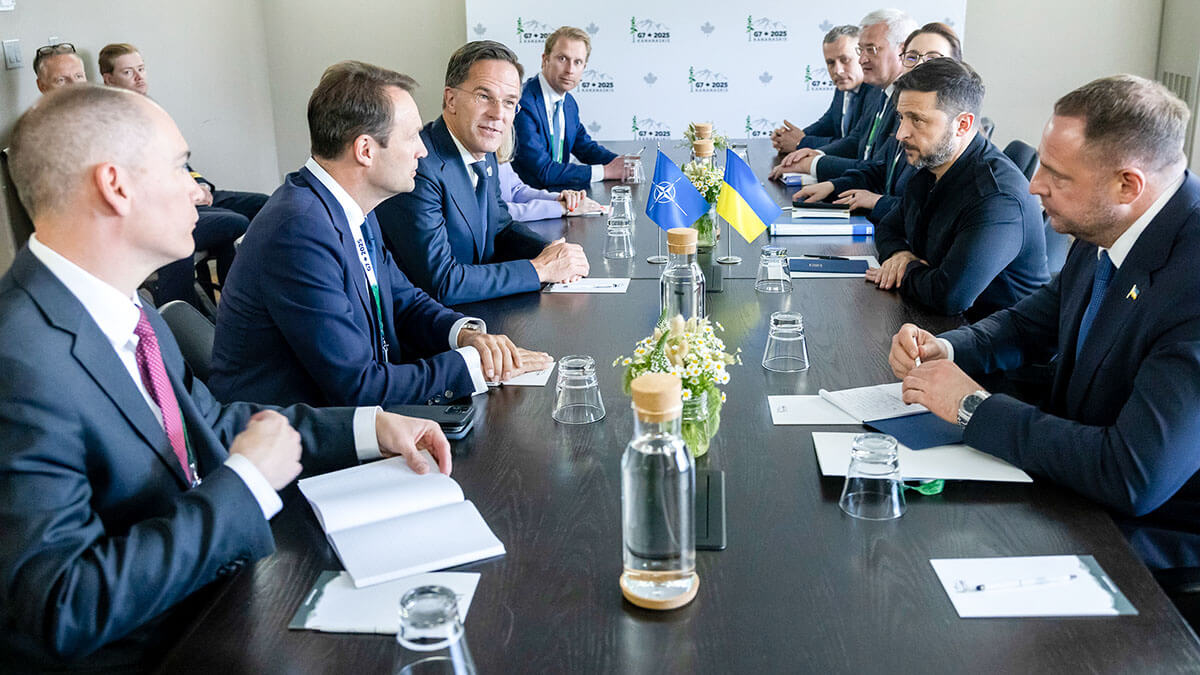
María, one last question to finish. In that FPV drone combat position where you have been this week, you mentioned whether they, or I suppose that is perhaps more the responsibility of the General Staff, are offering detailed information to the countries that are collaborating with Ukraine, I'm talking about NATO countries, Spain, the United States, Germany, etc., about how they are acting, how they are approaching things, so that the lessons being learned with the drones in this war can be used by European allies or the United States.
This is not at the combat level, it is at the level of the General Staff and, above all, at the level of the companies that manufacture and produce these drones, and there are already many agreements with companies in other countries to work together on development and production. Recently, incidentally, there was a news story here in Ukraine denouncing one of these companies, one of the largest drone manufacturers, which had collaborated with another company in another country and that company had plagiarised their idea, removed itself from the project and then presented it as its own research. In other words, there is a lot of movement among private companies, which have nothing to do with the government, on the issue of drone development.
And what is also clear is that for years now, in this war, the intelligence services of the allied countries have been present, because, as you rightly say, all the European and Western armies are now working on the development of their own drone units, because even if they are not likely to face a large-scale unilateral invasion like the one taking place in Ukraine, they do have to be prepared both for participation in international missions and for terrorist actions that do occur in European countries without the need for them to be at war, and I very much fear that we will soon see how they also use these unmanned aerial vehicles or unmanned ground vehicles in a kamikaze manner loaded with explosives. So it is not only a question of developing the drone industry and the technology that drives these drones, as you also mentioned, but also the whole issue of measures and countermeasures to stop them. Lucas said that this is one of the main problems, indeed the main problem.
Right now, there are sections of road near the front line that have been covered with fishing nets. In other words, a kind of physical barrier because they no longer know how to stop these aerial vehicles, which also move very fast and launch themselves loaded with explosives against their target, whether it be a person, a car, a motorcycle, or whatever is passing by.



